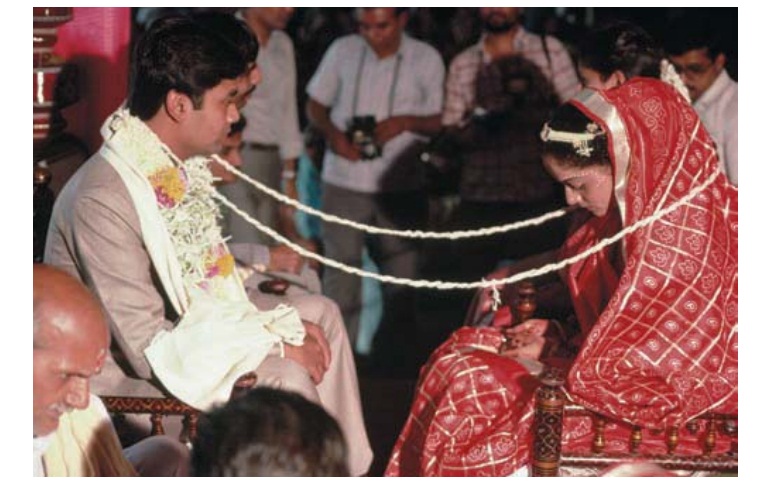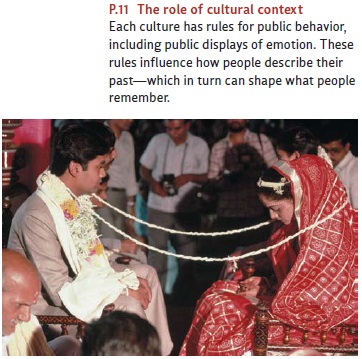Chapter: Psychology: Prologue: What Is Psychology?
The Cultural Setting of Emotional Memory

The Cultural
Setting of Emotional Memory
Thus weŌĆÖve seen that emotional
memoriesŌĆölike all memoriesŌĆöcan be shaped by the process of telling and
retelling, and this process depends in important ways on the social situation.
WeŌĆÖre likely to recall a memory differently if talking with a friend as opposed
to a police officer; weŌĆÖre likely to recall a memory differently if talking
with a child as opposed to an adult. And, in each situation, the style of
telling we adopt is likely to influence how we remember the original event
later on.
Similarly, the way an emotional
event is recalled, and the way the event is remem-bered, can be shaped by the
culture a person lives in. For example, in some Asian cul-tures, it is
considered inappropriate for people to display strong emotion in public (Figure
P.11). This social convention shapes how people relate their emotional
experi-ences to others, which in turn shapes the way they remember these
experiences. In most Western cultures, on the other hand, displays of emotion
are common; women in par-ticular are often encouraged to ŌĆ£share their
feelings.ŌĆØ This convention, too, shapes how events are describedŌĆöand thus how
they are remembered.

These differences from one culture to the next can have a powerful effect on how people think about the past. For example, weŌĆÖve already mentioned the attacks of September 11, 2001, and the vivid memories that most Americans (and many outside of the United States) have of these events. As we discussed, some aspects of these memories may be mistakenŌĆöincluding the details that individuals recall about when and how they heard the news and how they reacted. Even so, these memo-ries powerfully influence the way Americans think about the threat of terrorism and the politics of the Middle East. In these ways, the memo-ries help shape the culture.
The reverse, however, is also
true: Our shared culture shapes what we remember. In America, daily news
reports often contain reminders of September 11ŌĆöspecific men-tions of the
attacks, comments about the threat of terrorism, and so on. Television shows
and movies often contain references to the attacks. These (and other)
remindersŌĆöall part of our cultural surroundingŌĆövirtually guarantee that the
attacks will be frequent in peopleŌĆÖs thoughts and remain prominent in their
memories.
Other examples are easy to find,
and shared memories of important episodes are transmitted from generation to
generation in many countries. For example, the vio-lence in the Balkans, the
Middle East, or Somalia is fueled by deeply rooted hostility between different
ethnic or religious groups. The hostilities in turn are often justified on the
basis of long-past events that one side of the conflict perceives as horrific
offenses or deep injustices and the other side views as benign or legitimate.
In each case, the cultural surround contains frequent references to these
events, guaranteeing that the eventsŌĆöno matter how long ago they
occurredŌĆöremain fresh in each per-sonŌĆÖs memory and continue to guide their
thinking about these horrible conflicts.
Related Topics